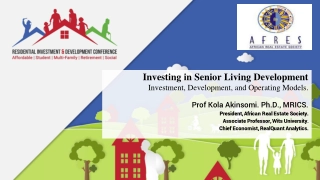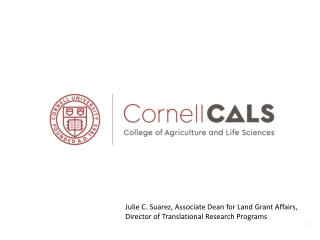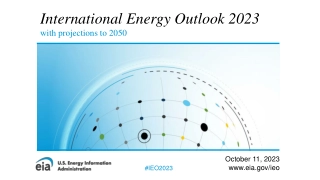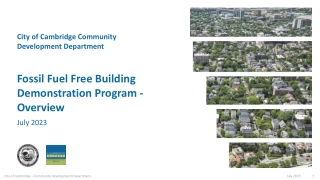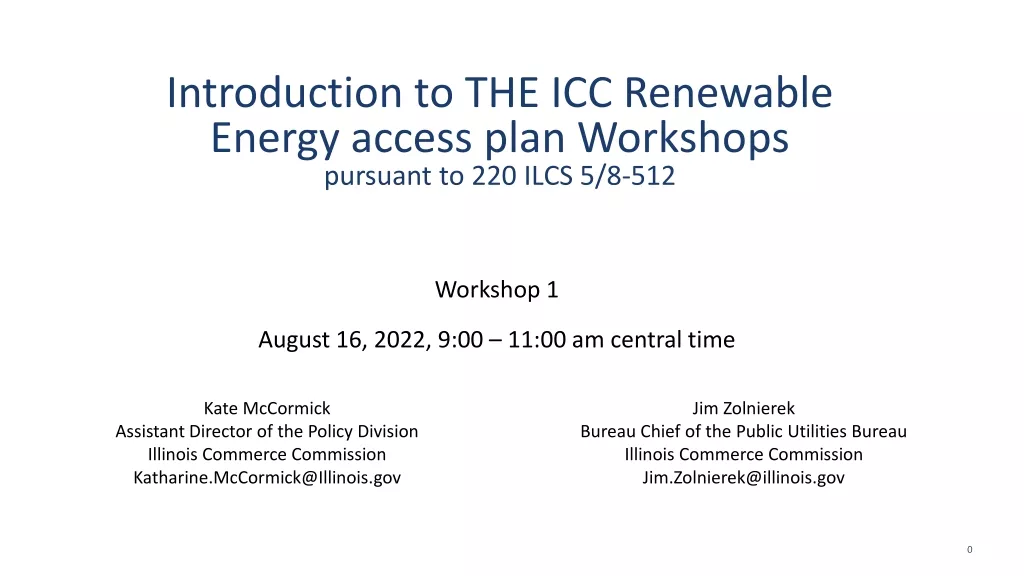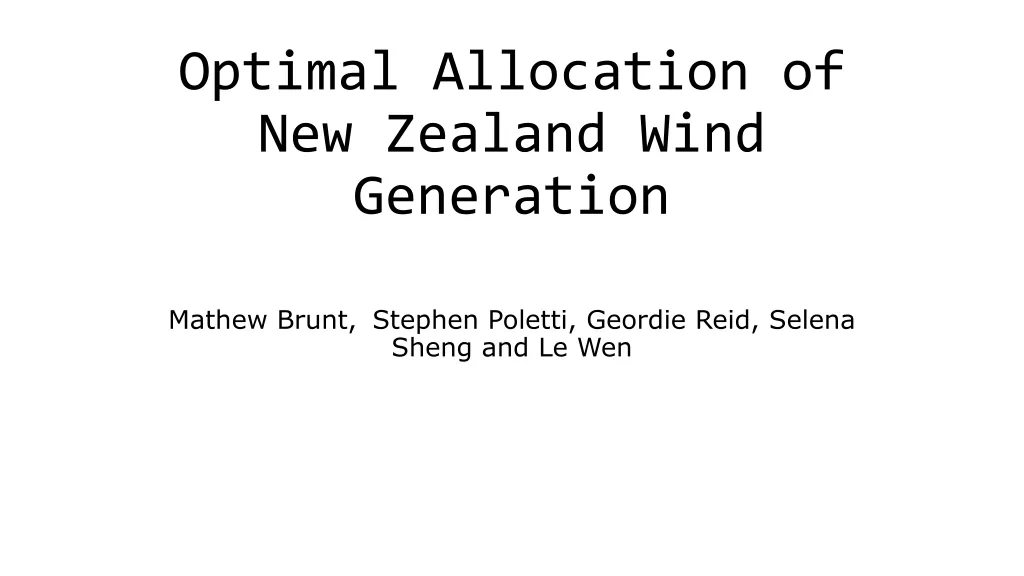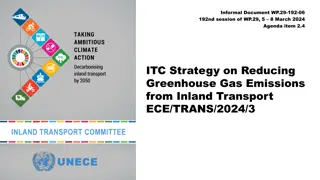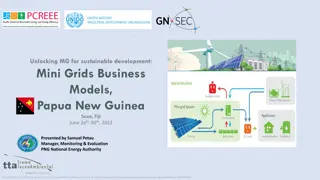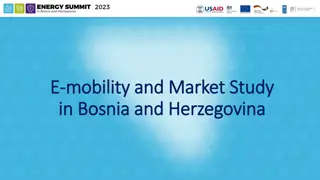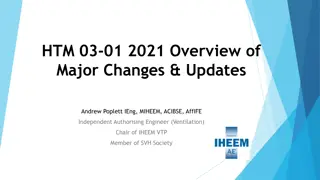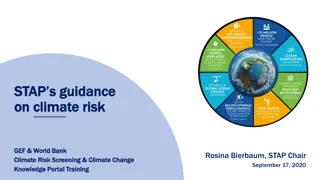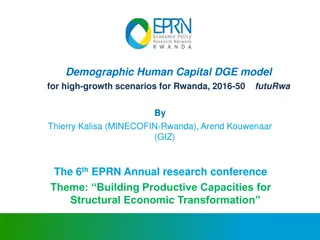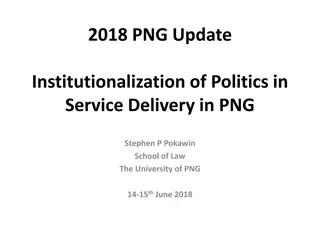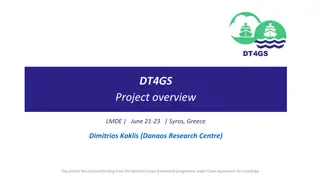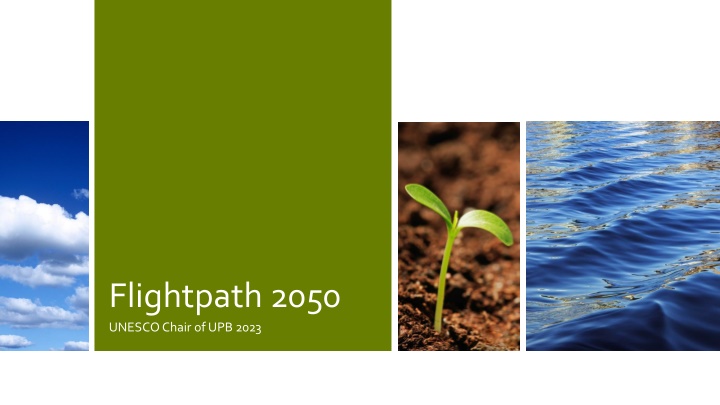
Flightpath 2050 and UNESCO Chair of UPB: Sustainability Goals and Innovations
Discover the key objectives of Flightpath 2050 and the UNESCO Chair of University POLITEHNICA of Bucharest. Learn about their focus on reducing CO2 emissions, noise reduction, and enhancing air transport efficiency through innovative technologies and sustainable practices. Stay updated with the latest evolutions and potential modifications to align with technological advancements and industry changes.
Download Presentation

Please find below an Image/Link to download the presentation.
The content on the website is provided AS IS for your information and personal use only. It may not be sold, licensed, or shared on other websites without obtaining consent from the author. If you encounter any issues during the download, it is possible that the publisher has removed the file from their server.
You are allowed to download the files provided on this website for personal or commercial use, subject to the condition that they are used lawfully. All files are the property of their respective owners.
The content on the website is provided AS IS for your information and personal use only. It may not be sold, licensed, or shared on other websites without obtaining consent from the author.
E N D
Presentation Transcript
Flightpath 2050 UNESCO Chair of UPB 2023
Key Objectives Flightpath 2050 Objectives: 1. Reducing CO2 Emissions: Goal: Reduce CO2 emissions from aviation by 75%. Innovative Technologies: Developing more fuel-efficient aircraft, engines, and improved aerodynamic design. Alternative Fuels: Utilizing sustainably sourced biofuels and developing low-carbon emission fuels. 2. Noise Reduction: Goal: Reducing aircraft-generated noise. Quieter Aircraft: Utilizing advanced materials and technologies to reduce noise produced by engines and structures. Noise Mitigation Measures: Implementing urban planning, flight management, and airport design strategies to minimize noise impact on communities. 3. Enhancing Air Transport Efficiency: Improved Airport Infrastructure: Upgrading and expanding airport infrastructure to increase efficiency and capacity. Air Traffic Management: Advanced air traffic management systems to optimize routes, avoid congestion, and reduce waiting times. Innovation and Research: Promoting innovation, new technologies, and collaboration between industry, universities, and research institutions for efficiency improvements. 2 UNESCO Chair of University POLITEHNICA of Bucharest
Reducing CO2 Emissions Goal: Reduce CO2 emissions by 75%. Innovative Technologies: Developing aircraft with reduced fuel consumption, more efficient engines, and improved aerodynamics. Alternative Fuels: Utilizing biofuels from sustainable sources and developing low-carbon emission fuels. 3 UNESCO Chair of University POLITEHNICA of Bucharest
Noise Reduction Goal: Reducing aircraft-generated noise. Quieter Aircraft: Utilizing innovative materials and technologies to reduce engine and structural noise. Noise Mitigation Measures: Implementing measures in urban planning, flight management, and airport design to minimize noise impact on communities. 4 UNESCO Chair of University POLITEHNICA of Bucharest
Enhancing Air Transport Efficiency Improved Airport Infrastructure: Modernizing and expanding airport infrastructure to enhance efficiency and capacity. Air Traffic Management: Advanced systems for managing and monitoring air traffic to optimize routes, avoid congestion, and reduce delays. Innovation and Research: Promoting innovation, new technologies, and collaboration to drive efficiency improvements in aviation. 5 UNESCO Chair of University POLITEHNICA of Bucharest
Updates and Evolutions Flightpath 2050 in the current context: In recent years, the Flightpath 2050 plan has been revised and updated to align with technological advancements and industry changes. Potential modifications and adjustments: As technology progresses and sustainability requirements evolve, the plan may undergo modifications and adjustments to remain relevant and effective. Sources for up-to-date information: For the latest information on Flightpath 2050, we recommend referring to the official website of the European Commission or other relevant sources. 6 UNESCO Chair of University POLITEHNICA of Bucharest
Conclusion Flightpath 2050 represents an ambitious vision for the future of European aviation, considering sustainability and efficiency. aviation can play a significant role in combating climate change and improving quality of life. By reducing CO2 emissions, noise, and enhancing efficiency, European essential to transform the Flightpath 2050 vision into reality. Collaboration between industry, authorities, and stakeholders is The contribution of HE could be very useful in terms of research and teaching. Updatedstudy programmes lead to sustainable air transport. 7 UNESCO Chair of University POLITEHNICA of Bucharest


